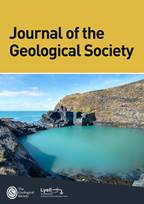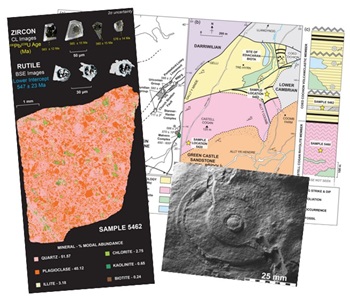
Journal of the Geological Society (JGS) is owned and published by the Geological Society of London.
JGS publishes topical, innovative and interdisciplinary research with global reach across the full range of Earth and planetary sciences. Regional geological studies of interest to our international readership are also welcomed.
Each year JGS presents the ‘JGS Early Career Award' for papers published in the journal, which rewards the writing of well-written, exciting papers from early career geologists.
The journal publishes research and invited review articles, discussion papers and thematic collections.
Journal of the Geological Society is a Plan S compliant journal.
JGS Editor-in-Chief
The Editor-in-Chief Yildirim Dilek (Miami University, USA) is supported by Deputy Editors Anna Bird (University of Hull, UK), Lorenzo Fedele (Università degli Studi di Napoli Federico II, Italy), Andrea Festa (University of Turin, Italy), Matías Ghiglione (Buenos Aires University, Argentina), and an international Editorial Board.
Online in the Lyell Collection
All journal content is hosted online and accessible via the Lyell Collection. The journal publishes 6 issues per year.
Online only and continuous publication
From 2021, the journal is published online only. Following acceptance, the accepted manuscript version of the article is made available online immediately. After completion of the production process, the final Version of Record is published directly in an issue. All accepted manuscripts and versions of record are hosted and accessible via the Lyell Collection.
The journal is abstracted and/or indexed in:
- Current Contents
- GeoArchive
- Geobase
- Geological Abstracts
- GeoRef
- Mineralogical Abstracts
- Petroleum Abstracts
- Science Citation Index
Key moment in the evolution of life on Earth captured in fossils

Research published in the Journal of the Geological Society has for the first time precisely dated some of the oldest fossils of complex multicellular life in the world, helping to track a pivotal moment in the history of Earth when the seas began teeming with new lifeforms - after four billion years of containing only single-celled microbes.
Lead author PhD student Anthony Clarke, from the Timescales of Mineral Systems Group within Curtin’s School of Earth and Planetary Sciences, said to determine the age of the fossils, researchers used volcanic ash layers like bookmarks in the geological sequence.
“Located in the Coed Cochion Quarry in Wales, which contains the richest occurrence of shallow marine life in Britain, we used outfall from an ancient volcano that blanketed the animals as a time marker to accurately date the fossils to 565 million years, accurate down to 0.1 per cent,” Mr Clarke said.
“With similar Ediacaran fossils found at sites around the world including in Australia, dating the fossils identifies them as being part of an ancient living community that developed as Earth thawed out from a global ice age.
“These creatures would in some ways resemble modern day marine species such as jellyfish, yet in other ways be bizarre and unfamiliar. Some appear fern-like, others like cabbages, whereas others resembled sea pens.”
Study co-author Professor Chris Kirkland, also from the Timescales of Mineral Systems Group at Curtin, said the fossils are named after the Ediacara Hills in South Australia’s Flinders Ranges, where they were first discovered, leading to the first new geological period established in over a century.
“These Welsh fossils appear directly comparable to the famous fossils of Ediacara in South Australia,” Professor Kirkland said.
“The fossils, including creatures like the disc-shaped Aspidella terranovica, showcase some of the earliest evidence of large-scale multicellular organisms, marking a transformative moment in Earth’s biological history.
“Ediacaran fossils record the response of life to the thaw out from a global glaciation, which shows the deep connection between geological processes and biology.
“Our study underscores the importance of understanding these ancient ecosystems in order to unravel the mysteries of Earth’s past and shape our comprehension of life’s evolution.”
The full research paper, ‘U–Pb zircon-rutile dating of the Llangynog Inlier, Wales: constraints on an Ediacaran shallow 1 marine fossil assemblage from East Avalonia’ was published in the Journal of the Geological Society and can be found online here